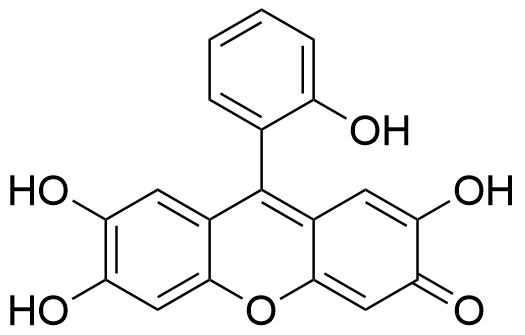Binding Properties
| 𝜈 | Molecule 1 : 1 Host | ||
| Ka = | 1.30⋅104 | ± 578.0 | M-1 |
| Kd = | |||
| logKa = | |||
| T | 25.0 °C | ||
| Energy | kJ mol-1 | kcal mol-1 | |||
|---|---|---|---|---|---|
| ΔG | = | -23.49 | ± 0.11 | -5.61 | ± 0.03 |
These are the specifications of the determination of the experimental results.
| Detection Method: | Direct | |||
| Assay Type: | Direct Binding Assay | |||
| Technique: | Fluorescence | |||
| 𝛌ex | = | 486.0 nm | ||
| 𝛌em | = | 511.0 nm | ||
| Ibound⁄Ifree | = | 1.32 | ||
Detailed information about the solvation.
| Solvent System | Buffer System | ammonium chloride pH-9.0 |
| Solvents | water | |
| Additives | ammonia | |
| AMMONIUM CHLORIDE | ||
| Source of Concentration | ||
| pH | 9.0 |
Please find here information about the dataset this interaction is part of.
| Citation: |
X. ZHU, J. SUN, J. WU, SupraBank 2025, Study on the inclusion interactions of β-cyclodextrin and its derivative with dyes by spectrofluorimetry and its analytical application (dataset). https://doi.org/10.34804/supra.20210928302 |
| Link: | https://doi.org/10.34804/supra.20210928302 |
| Export: | BibTex | RIS | EndNote |
Please find here information about the scholarly article describing the results derived from that data.
| Citation: |
X. ZHU, J. SUN, J. WU, Talanta 2007, 72, 237–242. |
| Link: | https://doi.org/10.1016/j.talanta.2006.10.016 |
| Export: | BibTex | RIS | EndNote |
Binding Isotherm Simulations
The plot depicts the binding isotherm simulation of a 1:1 interaction of 9-Hydroxyphenylfluoron (0.0015331544653123803 M) and heptakis-O-(2-hydroxypropyl)-β Cyclodextrin (0 — 0.0030663089306247606 M).
Please sign in: customize the simulation by signing in to the SupraBank.




